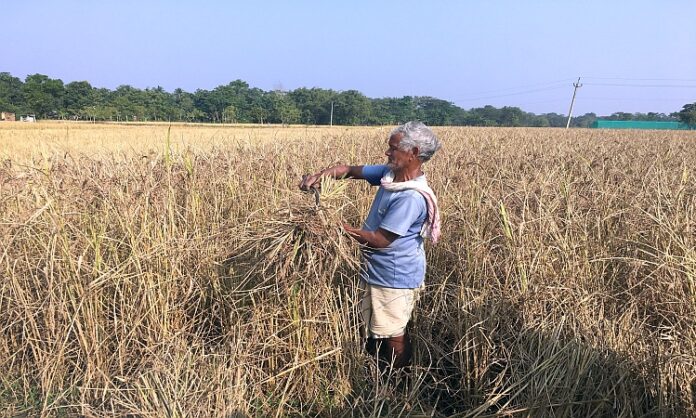New Delhi: The Central government has set the national food grains production target for the 2023-24 cropping year to be around 332 million tonne (MT) with net production target of rabi foodgrains at 161.2 mt.
The foodgrain production in 2022-23 is pegged at 330.5 mt as per the third estimate, according to the Union agriculture and farmers’ welfare ministry. The third estimate is based on last round rains, which was generally widespread, if not even, in the country.
Also Read: Central Agri Dept launches portal for enhanced data management
The agriculture ministry has kept a target of achieving a record wheat output of 114 mt in the 2023-24 rabi season against the output of 112.74 mt (as per the government’s third advance estimate) in 2022-23. Sowing of wheat, the main rabi or winter crop, begins in October along with other crops. Harvesting of the stable commodity starts in March-April.
The Central government is banking heavily for good yield .of wheat this time, as it had targetted to bring 60% of the total wheat area (30 million hectares) under the climate-resistant varieties amid constant changes in weather conditions.
Also Read: Farm sector holds key to next phase of India’s economic growth
“There are certain changes in climate change, which is affecting agriculture. Our focus is on climate resilient seeds,” union agriculture secretary Manoj Ahuja said on Tuesday while addressing a national conference on Rabi crops to chalk out sowing strategies.
Last year, the country had experienced extreme heat waves, which had adversely impacted the quality and output, especially on the wheat crop and uneven distribution of monsoon rain this year hampering kharif crop plantation.
Also Read: India’s foodgrain production estimated to go record high this year
The agriculture ministry officials, however, said that they were striving to make the country self-sufficient in producing pulses and oilseeds amid their shrinking production over the past couple of years. For the forthcoming rabi season, pulses production target has been set at 18.1 mt and oilseeds production target at 14.5 mt. The department set a target to produce 29.2 mt and 44 mt oilseeds in the entire season. Pulses production in 2022-23 has been 27.5 mt and oilseeds output 40.9 mt, as calculated by the department in its third advance estimate.
“The priority of the government is agro-ecological based crop planning for diversion of land from excess commodities like rice and wheat to deficit commodities such as oilseeds and pulses and high value export earning crops,” said the secretary.
Also Read: Govt seeks PPP role to enhance digital intervention in farming
Agriculture secretary Ahuja further said, “The strategy would be to increase the area through inter-cropping and crop diversification and productivity enhancement through introduction of high yielding varieties and adoption of suitable agronomic practices in low yielding regions.”
The government earlier set a vision to make the country self-sufficient in pulses and oilseeds production in view of the large yield gaps in crop production. For pulses, the department proposed to achieve the target of 32.5 million tonnes by 2025.
Also Read: Govt enforces curb on export of Basmati, other rice to check prices
“Special projects such as inter-cropping, targeting rice, expansion in high potential districts and non-conventional regions will bring additional area under oilseeds. All this will increase domestic production of annual edible oilseeds from the current level of 36.2 to 54.1 mt and edible oil production from 8.5 to 13.6 mt by the end of 2025-26,” according to a government release. “The renewed focus will help in reducing the import dependency from 56% to 36% in the next 5 years.”
Stressed on the need for a timely supply of fertilisers and balanced use of crop nutrients, fertilizer secretary Rajat Kumar Mishra said fertiliser is one crop input after water that influences production. He said that nano urea and DAP fertilisers are the future of farming in India.
Also Read: PM opens fertilizer plant in Telangana to ease urea, DAP supplies
The conference was held to review and assess the crop performance during the preceding crop seasons and fix crop-wise targets for rabi season in consultation with state governments, ensure supply of critical inputs and facilitate adoption of innovative technologies with a view to enhance production and productivity of the crops.




